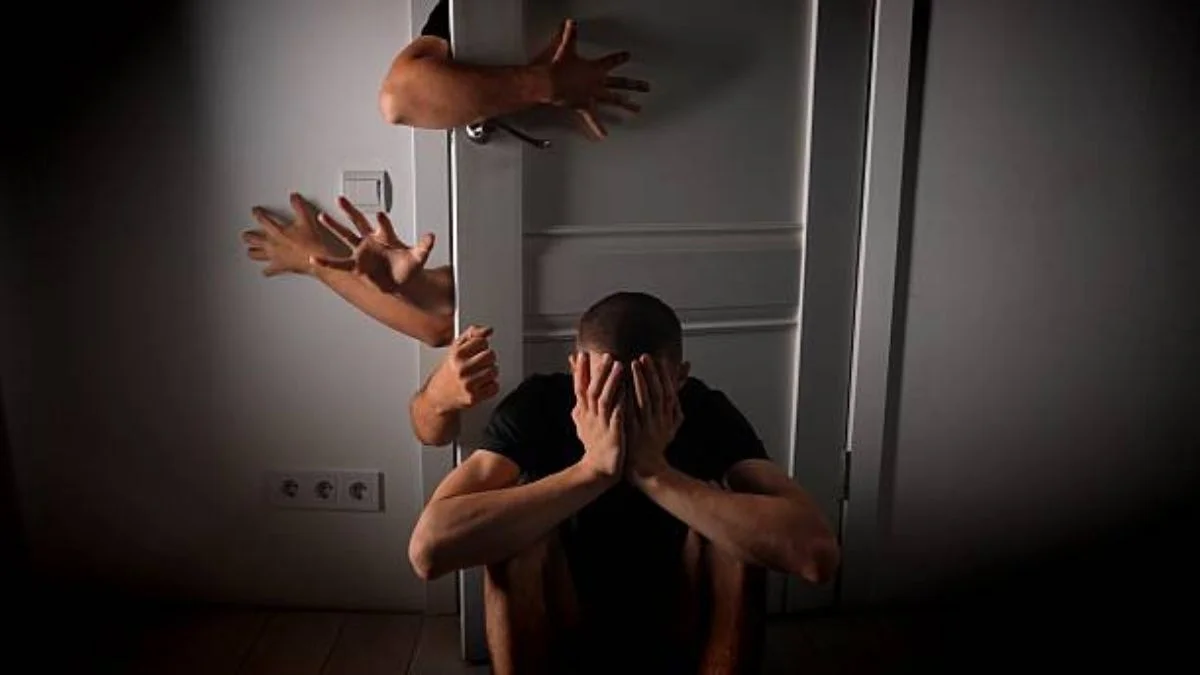HEALTH AND FITNESS
Social Anxiety vs Agoraphobia – Which One Is It?

When anxiety starts to limit your life, it’s essential to understand social anxiety vs agoraphobia. Though these conditions share overlapping features — such as fear, avoidance, or panic symptoms — they differ in their core triggers, underlying mechanisms, and treatment approaches. Getting the diagnosis right can be lifesaving. In this article, we’ll unpack definitions, signs, overlap, and strategies for managing each condition.
Table of Contents
What Are Social Anxiety and Agoraphobia?
What Is Social Anxiety Disorder?
Social anxiety disorder (also known as social phobia) is a mental health condition marked by fear or anxiety about social situations in which one might be scrutinized, judged, embarrassed, or humiliated.
People with social anxiety tend to:
- Worry intensely before and during social events
- Fear negative evaluation from others
- Avoid social interactions or endure them with distress
- Experience symptoms like blushing, sweating, trembling, or the mind going blank
What Is Agoraphobia?
Agoraphobia is an anxiety disorder where the person fears being in places or situations where escape might be difficult or help unavailable if panic-like symptoms occur.
Situations commonly avoided or feared include:
- Crowds, lines
- Public transportation
- Open spaces or enclosed spaces
- Being away from home alone
In severe cases, agoraphobia may lead a person to become homebound, avoiding leaving the safe “home zone” entirely.
Key Differences: Social Anxiety vs Agoraphobia
The distinction between social anxiety vs agoraphobia hinges on what is feared, why, and how one responds.
1. Focus of Fear
- Social Anxiety Disorder: The core fear revolves around being judged, embarrassed, or evaluated negatively by others. The threat is interpersonal or evaluative.
- Agoraphobia: The fear is about being trapped or unable to escape or get help in certain settings, often tied to panic or incapacitation fears.
2. Avoidance Behavior
- In social anxiety, avoidance is toward social situations (e.g., public speaking, parties, meeting new people).
- In agoraphobia, avoidance is toward places or contexts (e.g., being outside, using public transit, shopping malls) where escape or assistance seems challenging.
3. Overlap and Co-Occurrence
It is possible — and not uncommon — for an individual to have both conditions. In fact, social anxiety disorder often coexists with other anxiety disorders.One article cites that estimates of co-occurrence of agoraphobia and social anxiety range widely. Medical News Today Another source notes that when these conditions overlap, symptoms may be more severe and impairing. Verywell Mind+1
4. Symptom Manifestation & Triggers
Though both disorders may involve panic-like symptoms (e.g. elevated heart rate, shaking, dizziness) during exposure to the feared situation, the trigger differentiates them:
- With social anxiety, symptoms emerge when the person must perform or be evaluated socially (e.g. speaking, interacting).
- With agoraphobia, symptoms emerge in response to being in certain physical environments where escape seems compromised.
5. Functional Impact
- Social anxiety disorder often impairs social engagement, performance in work or school, forming relationships, or public-facing roles.
- Agoraphobia may restrict mobility more broadly — limiting ability to leave home or traverse particular settings — and lead to severe isolation.
6. Relative Prevalence & Onset
Social anxiety disorder tends to have onset earlier (often in adolescence) and is more prevalent. Agoraphobia is less common in the general population, but its functional burden can be higher.
Why Getting the Right Diagnosis Matters
Misdiagnosing social anxiety when agoraphobia is primary (or vice versa) can lead to suboptimal treatment. For example:
- A person with agoraphobia might wrongly focus only on social skills training when what’s most disabling is the fear of being trapped.
- Someone with social anxiety might miss critical exposure work in feared social settings if the treatment neglects social evaluation fears.
If you’re wondering Is it agoraphobia or social anxiety?, see this link early on: social anxiety vs agoraphobia — it walks through criteria, red flags, and self-assessment.
Getting the diagnosis right helps direct interventions, shape goals, and manage expectations.
How These Conditions Are Assessed
Clinicians use structured interviews, symptom checklists, and diagnostic criteria (e.g., DSM-5) to evaluate anxiety disorders. Some key components include:
- Timeline (symptoms persisting ≥ 6 months)
- Specific fear triggers
- Avoidance patterns
- Degree of distress and functional impairment
- Comorbid conditions (depression, other anxiety disorders, substance use)
They may also use tools like the Panic and Agoraphobia Scale (PAS) to evaluate severity when agoraphobia is in question.
Treatment Approaches: Similarities and Specifics
Because there is overlap in underlying anxiety mechanisms, many interventions help both conditions — but with nuances.
Shared Core Treatments
- Cognitive-Behavioral Therapy (CBT)
Restructuring unhelpful beliefs (e.g. “other people will judge me harshly” or “I’ll get stuck and can’t escape”) is foundational. - Exposure Therapy
Gradually confronting feared situations in a safe, controlled way reduces avoidance and fear through desensitization. - In social anxiety: exposure to social interactions, public speaking, group settings
- In agoraphobia: exposure to travel, crowds, enclosed spaces
- Medication (when needed)
SSRIs, SNRIs, or anxiolytics may be prescribed to reduce baseline anxiety and support therapy engagement. - Supportive Strategies & Lifestyle Interventions
- Mindfulness, relaxation, breathing techniques
- Healthy sleep, nutrition, exercise
- Social support, peer groups, psychoeducation
Specific Considerations for Each Condition
- For social anxiety, therapy might emphasize improving social skills, assertiveness training, role-playing, and managing anticipatory anxiety.
- For agoraphobia, a focus may be on in vivo exposure, placing gradual distance from home, using companion support, and dealing with safety behaviors.
Because patients often present with multiple anxiety disorders, integrated or sequential treatment plans may be required.
Tips for Pets or Clinicians: What to Watch & What to Ask
- Ask about where fear appears: Is it social settings (conversations, judgments) or places/situations (crowds, transit)?
- Probe whether avoidance is driven by “fear of evaluation” (social anxiety) or “fear of entrapment/no escape” (agoraphobia).
- Ask about comorbid panic symptoms — sudden surges of intense fear — to assess overlap.
- Evaluate daily functioning: Which disorder more impairs life?
Real-World Examples
- Case A: Sarah avoids giving presentations at work and declines social gatherings because she fears people judging her. That leans toward social anxiety.
- Case B: Michael avoids leaving his house unless accompanied because he fears being trapped on a bus or in a crowded mall. That suggests agoraphobia.
- Case C: Rachel avoids both social events and going out alone. She worries about embarrassment and being stuck outside. She may have both social anxiety and agoraphobia.
When to Seek Professional Help
If any of these happen, it’s time to reach out:
- Anxiety or fear that lasts longer than 6 months
- Symptoms interfering with work, school, relationships, or life goals
- Reliance on avoidance that reduces life opportunities
- Emotional suffering, depression, or thoughts of self-harm
- Escalation of substance use as a coping mechanism
- Early intervention improves outcomes.
Summary & Takeaway
- Social anxiety vs agoraphobia are distinct, though overlapping, anxiety disorders.
- Social anxiety centers on fear of judgment; agoraphobia centers on fear of inability to escape.
- Exposure, CBT, and medications can help both, but the focal exposure and emphasis differ.
- A correct diagnosis helps tailor treatment more precisely.
- Many people experience both simultaneously, which complicates but does not preclude effective care.
-

 GENERAL5 months ago
GENERAL5 months agoChristofle – For Those Who Dream of Family Heirloom Silver
-

 SPORTS7 months ago
SPORTS7 months agoDiscover the World of Football with Streameast: Watch Your Favorite Leagues and Tournaments
-

 GENERAL4 months ago
GENERAL4 months agoUncovering the World of кинокрадко: The Dark Side of Film Piracy
-

 GENERAL2 months ago
GENERAL2 months agoATFBooru: Anime, Gaming, and Subculture Imageboard























